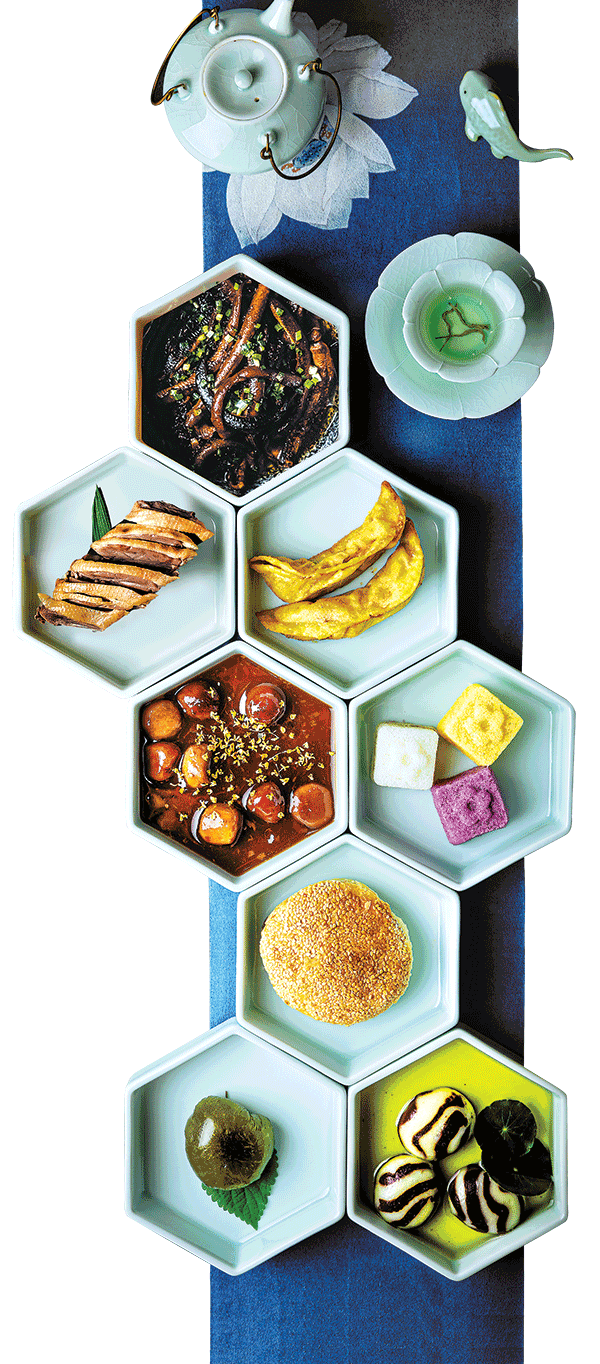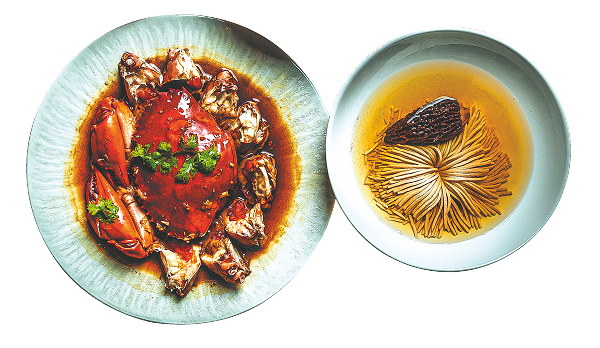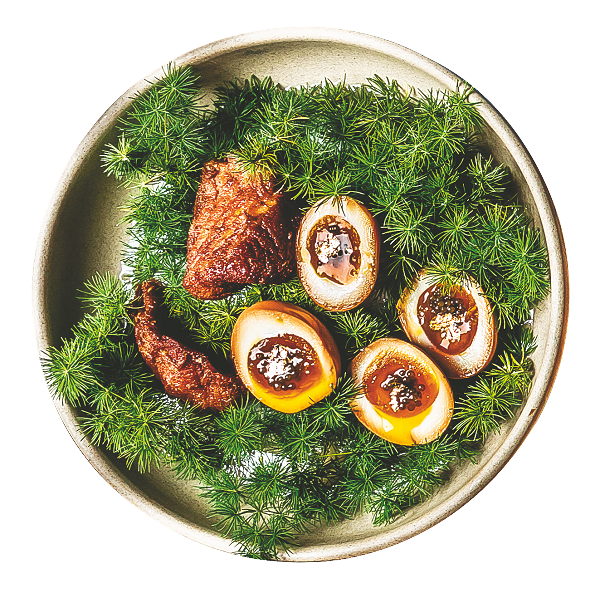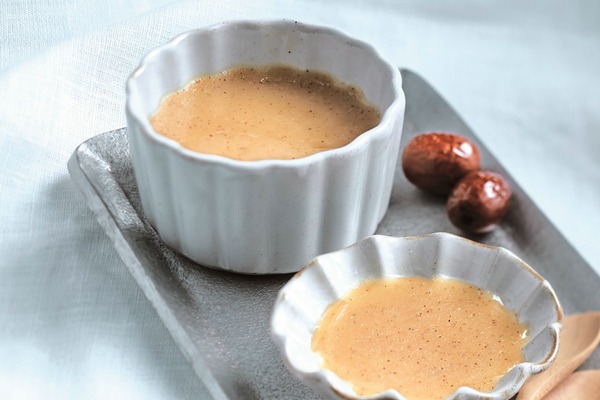Journey of delight nourishes appetite for adventure
During her weeklong trip to cities in Jiangsu and Zhejiang provinces, Yang Yang takes in the smells, tastes, and even the drunken shrimp that make the region's dishes unique.


After finishing a cup of iced milk tea during a seven-day work trip, I hurriedly walked through Huishan Ancient Town in Wuxi, Jiangsu province, hoping to enter Jichang Garden before it became too crowded. But some tantalizing aroma slowed me down.
I knew what it was — braised pork with brown sauce — one of my favorite dishes. As a master of braised pork, I knew the ingredients must include a lot of rock sugar since Wuxi people favor sweetness. Braised pork ribs, a signature Wuxi dish, aren't always appreciated by those outside the Jiangnan region because of their distinct sweetness.
Judging from the aroma, the pork must have been braised for longer than an hour. Looking around, I noticed a restaurant selling "silver thread" noodles, another dish popular in Jiangnan, which has noodles fine as silken threads that glisten with a pale, pearly sheen. The noodles are usually topped with a variety of savory garnishes including braised pork, crab roe and shrimp.
I immediately decided that after I toured the classical garden, the Huishan Temple and the Second-best Spring Under Heaven, I would try the noodles.

However, when I walked out of the spring, I saw another time-honored restaurant not far from the exit, which serves signature dishes like Wuxi-style xiaolongbao — juicy pork dumplings with a sweet-savory surprise. I only had one day in Wuxi so I had to change my plans. I sat at the restaurant and ordered four dumplings and a bowl of three-delicacy wonton. I realized then that Wuxi xiaolongbao is not my dish.
Unlike many people, trying the local cuisine is not a must-do tourist activity to me. However, in Hangzhou, Zhejiang province, one of my colleagues who grew up there took me to a restaurant not far from West Lake to try a dish local people especially favor, something she was craving.
When the covered bowl of Wine-cured Fresh Shrimp was put on the table, some of the translucent little shrimp struggled in the sauce under a transparent plate.
The sauce is a mixture of minced garlic, ginger, chili and most importantly, Shaoxing rice wine said to kill bacteria or viruses in the shrimp.
I waited until all the shrimp surrendered and their legs stopped moving before summoning up the courage to pick one. Luckily, it did not wake up when my front teeth cut it into two. The raw meat, soaked in sauce, was soft, sweet and slightly spicy. Although I felt like a beast giving the drunken shrimp their last memory, they were really tasty. My colleague looked satisfied and happy, as she must have recalled sweet memories of her hometown.
The restaurant owner practically forced us to order the four dishes that showcase the spring flavors of the local products — winter bamboo shoots, tender Malantou greens (a wild edible plant), rice cakes and pickled mustard greens. Once we agreed, he stopped us from ordering more because "it would be too much". Indeed, we failed to consume everything, so my colleague packed the leftovers and finished them on the train back to Beijing.
I still had to do an interview in Hangzhou and at high noon, I took a bus from West Lake to the workshop run by Dragon Well Tea roaster Fan Shenghua.
Before I started the interview, a middle-aged woman served me a glass of green tea. The glass was short and wide, which is said to be the best way to drink Dragon Well Tea since it is easier to observe how the roasted tea leaves unfold and smell the refreshing aroma that fills the whole space.
I did not have the time to drink the hot tea until the interview was finished, and the tea leaves had stretched out, turning the water green. After drinking it all, Fan's son Xuesong poured more boiling water into the glass. The delicate aroma of tea filled my mouth and nose. Interestingly, after leaving the workshop and spending another three hours in the Xixi Wetland in the afternoon heat, I did not feel thirsty.

My first meal in Nanjing, Jiangsu province, was simple — roast duck in the local style. Unlike the famous Peking roast duck, its Nanjing counterpart does not have crispy skin, but instead has many wrinkles, which help draw the sweet sauce that enriches the taste of the duck.
The next day, as I strolled along the East Zhonghua Gate Historical Culture Block, I turned into Santiaoying Alley to find myself standing beside several snack shops. It was 9 pm when I saw the Plum Cake shop and I decided to buy one just to see whether it tasted the same as 15 years ago when I was a university student in Nanjing.
I would say the Plum Cake was the best thing I ate during my weeklong trip to Jiangnan. A beloved traditional snack from Nanjing, the cake is named for its iconic plum blossom shape. Made with a sticky rice flour shell and filled with sweet red bean paste or sesame, it is baked in special molds to achieve its floral design. Topped with candied fruits and nuts, this centuries-old delicacy offers a chewy texture and gentle sweetness, a must-try for a taste of Nanjing's culture.
I bought a cake with sweetened bean paste inside — the traditional set — finding that except the price, everything stayed the same, even the scalding heat inside. The Plum Cake and the cultural creative products on the block made my day.




































